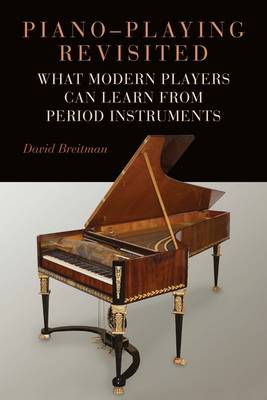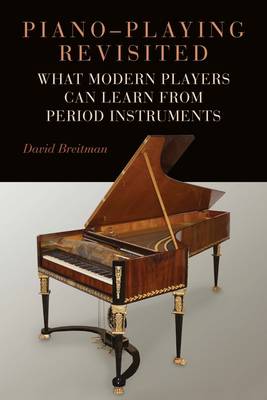
Bedankt voor het vertrouwen het afgelopen jaar! Om jou te bedanken bieden we GRATIS verzending (in België) aan op alles gedurende de hele maand januari.
- Afhalen na 1 uur in een winkel met voorraad
- In januari gratis thuislevering in België
- Ruim aanbod met 7 miljoen producten
Bedankt voor het vertrouwen het afgelopen jaar! Om jou te bedanken bieden we GRATIS verzending (in België) aan op alles gedurende de hele maand januari.
- Afhalen na 1 uur in een winkel met voorraad
- In januari gratis thuislevering in België
- Ruim aanbod met 7 miljoen producten
Zoeken
€ 105,45
+ 210 punten
Omschrijving
Today's pianists are expected to play music of three centuries on a single instrument: Steinway's design from the late 1800s. Other types of pianos, such as Mozart's Walter or Chopin's Pleyel, are increasingly being copied or restored, but they are played almost exclusively by specialists in "Historical Performance." David Breitman has been introducing Oberlin Conservatory students to historical keyboards since 1991, and in this book he focuses on the music he cares about most deeply and the problems he has found most perplexing.
He begins by acknowledging the dilemma of confronting historical repertoire with modern instruments, then shows how to apply insights from period instruments to practical problems on any piano, including the relationship between melody and accompaniment and the use of the pedal. The central portion of the book discusses the pianos and piano music of Haydn and Mozart, Beethoven, Schubert, and Chopin, as well as the special place of the clavichord in eighteenth-century keyboard culture. A wide range of musical examples demonstrates how composers were influenced by the instruments they knew, and how that understanding can help today's performers. The book concludes with a passionate plea for individual creativity and autonomy, authentic voices for our own time.
He begins by acknowledging the dilemma of confronting historical repertoire with modern instruments, then shows how to apply insights from period instruments to practical problems on any piano, including the relationship between melody and accompaniment and the use of the pedal. The central portion of the book discusses the pianos and piano music of Haydn and Mozart, Beethoven, Schubert, and Chopin, as well as the special place of the clavichord in eighteenth-century keyboard culture. A wide range of musical examples demonstrates how composers were influenced by the instruments they knew, and how that understanding can help today's performers. The book concludes with a passionate plea for individual creativity and autonomy, authentic voices for our own time.
Specificaties
Betrokkenen
- Auteur(s):
- Uitgeverij:
Inhoud
- Aantal bladzijden:
- 228
- Taal:
- Engels
- Reeks:
- Reeksnummer:
- nr. 176
Eigenschappen
- Productcode (EAN):
- 9781648250101
- Verschijningsdatum:
- 1/02/2021
- Uitvoering:
- Hardcover
- Formaat:
- Genaaid
- Afmetingen:
- 150 mm x 231 mm
- Gewicht:
- 498 g

Alleen bij Standaard Boekhandel
+ 210 punten op je klantenkaart van Standaard Boekhandel
Beoordelingen
We publiceren alleen reviews die voldoen aan de voorwaarden voor reviews. Bekijk onze voorwaarden voor reviews.









